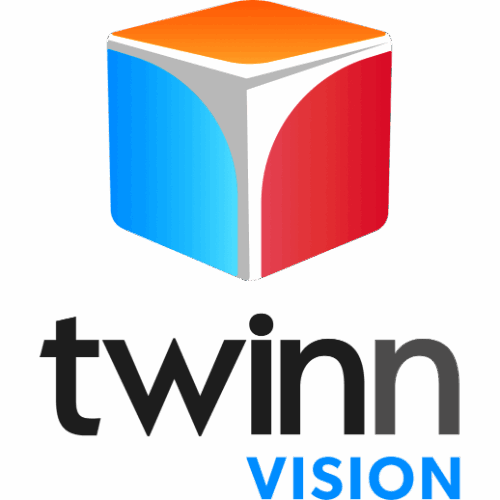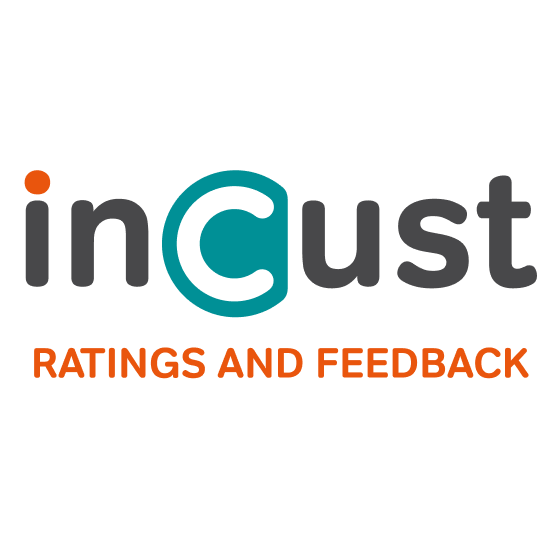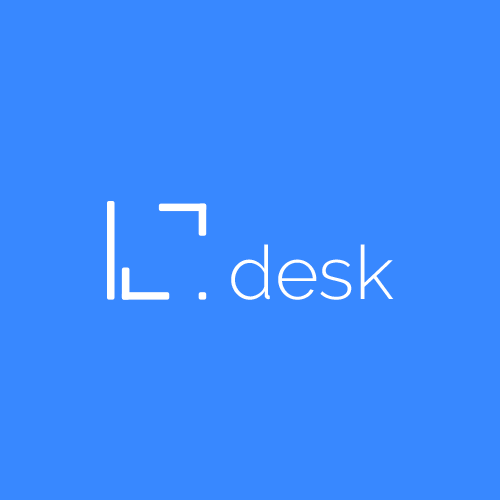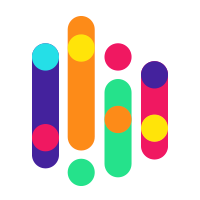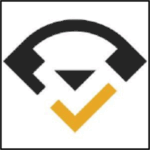What Is Customer Satisfaction Software?
A strong tool for measuring and raising customer satisfaction levels in firms is customer satisfaction software. It gathers, examines, and reports consumer feedback, giving companies important knowledge about the requirements, preferences, and experiences of their clients. With the help of this software, businesses can proactively detect and resolve potential problems, which eventually increases client retention and loyalty.
The capacity of customer satisfaction software to collect input from various sources, including surveys, reviews, and social media, is one of its primary characteristics. This guarantees that companies have a thorough grasp of what their clients think and are able to behave appropriately based on data that is updated in real time. The capacity to track and monitor customer happiness over time is an additional benefit of employing customer satisfaction software.
This enables companies to spot any patterns or trends in their customer satisfaction scores and implement the required changes to improve the client experience as a whole. Furthermore, customer satisfaction software usually has strong analytics and reporting features that give companies useful information for data-driven decision-making.
Additionally, it provides dashboards that can be customized, which makes it simple for companies to monitor their progress and assess the effectiveness of their customer satisfaction programs.
Additionally, capabilities like sentiment analysis, text analytics, and predictive analytics are frequently included in customer satisfaction software, which helps companies better understand the requirements and feelings of their clients. Consequently, this aids companies in customizing their goods and services to better satisfy the needs of their clients.
What Are The Recent Trends In Customer Satisfaction Software?
The market for customer satisfaction software is always changing to accommodate the shifting demands of both consumers and enterprises. In the current digital era, companies of all sizes and sectors place a high premium on customer pleasure. As a result, there has been a notable surge in demand in recent years for software solutions that can enhance customer satisfaction. We will examine current developments in customer satisfaction software and their potential advantages for your company in this buyer's guide.
1. Machine Learning (ML) And artificial intelligence (AI): Using AI and ML technology is one of the most popular trends in customer satisfaction software. Businesses can now gather and analyze vast volumes of consumer data in real-time thanks to these cutting-edge technologies, which offer insightful information about the preferences and behavior of their customers. Additionally, customer service procedures like answering frequently asked questions and fixing problems can be automated with AI and ML algorithms, which will speed up response times and increase customer satisfaction in general.
2. Customization: Consumers are more likely to be happy with a tailored approach and now anticipate personalized experiences from businesses. Consequently, features that allow organizations to customize their interactions and communications with clients are now being incorporated into customer satisfaction software. Higher levels of customer satisfaction and loyalty may result from customized product recommendations, targeted marketing campaigns, and tailored email and chatbot responses.
3. Support For Omnichannel: Omnichannel support is now essential for customer satisfaction software since customers interact with businesses through a variety of channels, including social media, email, live chat, and phone. This enables companies to easily address consumer questions and concerns through all channels, guaranteeing a consistent and fulfilling consumer experience. Additionally, it gives companies the ability to collect client feedback across a variety of channels, giving them a comprehensive picture of consumer satisfaction levels.
4. CRM Integration: Businesses are increasingly integrating customer satisfaction software with customer relationship management (CRM) software. Businesses may discover frequent problem spots and successfully solve them thanks to this integration, which provides a comprehensive view of consumer interactions and feedback. In order to enhance the overall client experience, it also aids in tracking customer satisfaction levels and gathering customer data.
5. Instantaneous: Analysis and Feedback Customer satisfaction surveys that were conducted only once a year are already gone. Customers now anticipate prompt replies and action from companies. Real-time feedback and analytics is the newest trend in customer satisfaction software, allowing companies to collect and examine consumer input instantly. This makes it possible to find and fix problems quickly, which raises customer satisfaction levels.
Benefits Of Using Customer Satisfaction Software
Any business's success depends on its ability to satisfy its customers. In addition to attracting repeat business, satisfied consumers promote a brand by generating goodwill. Businesses must put customer happiness first in today's fiercely competitive market if they want to stay ahead of the competition. Software for customer satisfaction can help with this. The following are the main advantages of employing software for customer satisfaction:
1. Real-Time Feedback Collection: Companies can get real-time feedback from customers by using customer satisfaction software. This implies that companies can promptly resolve any problems or worries brought up by clients, resulting in a satisfying client experience.
2. Thorough Data Analysis: Companies may collect and examine feedback data from a variety of sources, including surveys, reviews, and social media, by using customer satisfaction software. Businesses may make data-driven decisions to enhance their goods and services by using this thorough analysis, which offers insightful information on consumer preferences, problems, and satisfaction levels.
3. Better Customer Retention: Businesses can improve customer retention by using customer satisfaction software to comprehend and handle the requirements and problems of their customers. A higher customer lifetime value results from satisfied consumers who are more inclined to stick with a brand and maintain their engagement with the company.
4. Employee Performance Evaluation: Some customer satisfaction software enables companies to get input from their employees in addition to their customers. This aids in assessing worker performance and pinpointing areas in need of development to improve the general client experience.
5. Cost-Effective Solution: Manual techniques for ensuring client satisfaction, like as phone calls and surveys, can be costly and time-consuming. By automating these procedures, customer satisfaction software helps organizations save time and money. Additionally, companies can lower turnover rates and ultimately save money by increasing customer happiness.
6. Competitive Advantage: By promptly resolving problems and adjusting to shifting client demands, companies can maintain an advantage over rivals by having access to real-time customer feedback and insights. In a congested market, this can help companies stand out and provide them a competitive edge.
Important Factors To Consider While Purchasing Customer Satisfaction Software?
There are a number of crucial considerations to make in order to make an informed choice when thinking about buying customer satisfaction software. Before making a purchase, keep the following important factors in mind:
1. Your Business Needs: Identifying your company's needs is the first step in selecting the best customer satisfaction software. Think about how big your company is, how many clients you have, and what aspects of your business need to be improved to increase customer satisfaction.
2. Features And Functionalities: The features and functionalities of various customer satisfaction software vary. Assessing which features are necessary for your company and which are optional is crucial. Customer feedback management, surveys, analytics, and reporting capabilities are a few typical characteristics to search for.
3. User-Friendliness: Both your team and your clients should find the program simple to use and intuitive. To test out the software's interface and user experience, be sure to arrange a demo or ask for a free trial.
4. Integration Capabilities: Software for customer satisfaction functions best when it is integrated with your existing tools and processes. Think about how simple it is to integrate the program with your current help desk, CRM, or other customer support platforms.
5. Mobile Compatibility: Selecting customer satisfaction software that is mobile-friendly is essential as more and more customers communicate with businesses via their mobile devices. This guarantees that your clients may interact with your company while on the go and readily offer feedback.
6. Customer Support: Seek out a software supplier that provides dependable customer support, which includes instruction on the program's use and timely resolution of any potential technical problems.
7. Scalability: Your needs for client satisfaction may change as your company expands. As a result, picking software that can grow with your company and meet your demands in the future is crucial.
8. Reputation And Reviews: To gain a sense of the software's efficacy and reputation, conduct research and read reviews from other companies. You can learn a lot about the software's advantages and disadvantages from this. You may select the best customer satisfaction software to enhance customer happiness and propel business success by carefully weighing these elements. Make sure you carefully consider your options and select the program that best suits your company's objectives and demands.
What Are The Key Features To Look For In Customer Satisfaction Software?
There are a number of important factors to take into account when selecting the best customer satisfaction software for your company. These features not only significantly improve the experience of your consumers, but they also assist your team in efficiently managing and monitoring client satisfaction. The following are crucial elements to consider while weighing your options:
1. Survey Creation And Distribution: An easy-to-use survey creation platform that lets you personalize and send surveys to your clients is a must for any excellent customer satisfaction program. Seek out software that allows you to distribute surveys via email, SMS, or social media, and that provides a range of question kinds and survey templates.
2. Real-Time Input Collection And Reporting: Gaining insight into your consumers' demands and pinpointing areas for development requires having access to real-time input. Seek out software that collects comments in real time and delivers thorough analytics and reporting. You will be able to track client satisfaction levels and make data-driven choices to enhance their experience as a result.
3. Multilingual Support: Selecting software that supports multiple languages is crucial if your company has a broad clientele or conducts business internationally. By enabling all consumers to submit feedback in the language of their choice, this feature will contribute to more accurate and trustworthy data.
4. Integrations: Your customer satisfaction software's functionality can be substantially increased by integrating it with your current systems, such as helpdesk or CRM software. Seek out software that provides smooth integrations so you can monitor customer satisfaction data centrally and quickly follow up with unhappy clients.
5. Customizable Dashboards And Alerts: You can keep an eye on key metrics and trends by using a customer satisfaction program that offers dashboards and alerts that are customizable. With the use of these capabilities, you may quickly address problems by setting up notifications for particular occurrences, like a sharp decline in customer satisfaction ratings.
6. Mobile Compatibility: Selecting customer satisfaction software that is mobile-friendly is crucial given the rise in the use of mobile devices. This will enable your staff to monitor customer satisfaction even when they are not in the office and get feedback while on the go.
7. Client Segmentation: Each client is different, and their wants and preferences may affect how satisfied they are. Seek for software that lets you divide up your clientele and adjust your surveys appropriately. This will enable you to make more focused adjustments and obtain a deeper understanding of various client categories.
8. Actionable Insights: Improving your clients' overall experience is the ultimate aim of utilizing customer satisfaction software. As a result, selecting software that not only gathers input but also offers recommendations and insights based on the data is crucial. Making strategic decisions based on this will help you increase client happiness and, eventually, business success. You may select the greatest customer satisfaction software for your company by taking into account these important factors. This software will not only satisfy your present requirements but also develop with your company and your customers' changing wants.
Why Do Businesses Need Customer Satisfaction Software?
Businesses can no longer rely alone on providing high-quality goods and services to keep clients in the cutthroat market of today. Customer happiness is now essential to any business's success due to the growth of social media and online evaluations. Software for customer satisfaction is a potent instrument made to assist companies in monitoring, measuring, and raising customer satisfaction levels. It gives you insightful information on the experiences of your clients, enabling you to pinpoint problem areas and make informed choices. Businesses may improve the whole customer experience, boost customer retention, and eventually boost revenue by investing in customer satisfaction software. The following are some main justifications for why your company should include customer satisfaction software in its plan:
1. Real-Time Feedback: Companies can get real-time feedback from their customers by using customer satisfaction software. This enables them to evaluate their performance and quickly make the required adjustments. Businesses can show their dedication to their clients and improve their relationship with them by responding to their criticism.
2. Personalization: Companies can use customer satisfaction software to examine the information gathered and design experiences that are tailored to each individual's tastes and input. Increased client loyalty and pleasure may result from this degree of customisation.
3. Find Pain Points: Companies can find pain spots in their client journey by using customer satisfaction tools. Businesses can enhance customer satisfaction by identifying the areas in which customers are not satisfied and implementing corrective efforts to improve the entire experience.
4. Assess Customer Loyalty: Customer satisfaction software assesses both customer loyalty and satisfaction. By keeping an eye on loyalty, companies can determine which clients are most likely to leave and take action to keep them.
5. Competitive Advantage: Providing outstanding customer service can help organizations stand out in today's congested market. By consistently enhancing the client experience and surpassing rivals, customer satisfaction software can assist companies in staying ahead of the competition.
How Much Time Is Required To Implement Customer Satisfaction Software?
Depending on the particular program selected and the size of your company, the time required to implement customer satisfaction software can vary. The entire process of integrating the software into your business's operations can take a few weeks to several months on average. Researching and choosing the best customer satisfaction software for your company is the first step in putting it into practice.
Taking into account elements like features, price, and compatibility with your current systems may require some effort. The actual installation process can usually be divided into several stages after you have selected a piece of software. Data gathering is typically the first stage, during which you compile and arrange client information and comments. Depending on how much data you need to gather, this could take many weeks to finish.
The program must then be set up and tailored to your company's requirements. Depending on how complicated your needs are, this could take a few days to a few weeks. The software must be tested to make sure it is operating properly when configuration is finished. Depending on the size of your company and the level of customization, this testing phase may take a few days to a few weeks.
Lastly, the program must be linked with your current systems and distributed to your workforce. To guarantee a seamless transfer, this procedure may take many weeks. In general, smaller businesses may need 4-6 weeks to adopt customer satisfaction software, whereas larger enterprises may need 3-6 months. To guarantee a successful and smooth integration into your company, it is crucial to devote sufficient time and resources to the implementation process.
What Is The Level Of Customization Available In Customer Satisfaction Software?
Depending on the particular software platform, several levels of customisation are accessible in customer satisfaction software. Generally speaking, though, the majority of customer satisfaction software provides a great degree of customisation to meet the particular requirements of any company. The option to build customized surveys and feedback forms is one of the most popular customization capabilities in customer satisfaction software.
By customizing these forms to collect particular data and insights from clients, companies can collect information that is most pertinent to their operations. Additionally, dashboards and reports can be customized using customer satisfaction software. This implies that depending on their unique aims and objectives, firms can decide which measurements and KPIs to monitor and present.
Businesses are able to concentrate on the most important aspects of their customer satisfaction strategy because to this degree of personalization. Workflows and procedures can also be customized using certain customer satisfaction software. This enables companies to design custom processes and automate certain activities and tasks according to their own requirements.
For instance, to resolve issues and increase customer happiness, a company can configure a customized workflow to automatically send a follow-up email to clients who have left unfavorable reviews. Software for customer satisfaction may also provide customization choices for elements like design and branding. This enables companies to establish a uniform and unified consumer experience by integrating their own branding components.
Which Industries Can Benefit The Most From Customer Satisfaction Software?
Any business's success depends on its ability to satisfy its customers. It has a big impact on boosting customer loyalty, enhancing brand reputation, and accelerating revenue growth. Providing exceptional customer service has become essential in today's fiercely competitive economy. Software for customer satisfaction enters the scene at this point. What sectors stand to gain the most from customer satisfaction software, then? Let's examine it more closely.
1. Retail And E-commerce: Customer satisfaction software can assist companies in better understanding the requirements and preferences of their clientele in the retail and e-commerce sectors. Retailers can enhance their product offerings, marketing plans, and general consumer experience by collecting feedback and examining customer data.
2. Hospitality And Tourist: Companies in the hospitality and tourist sector place a high premium on client happiness. Hotels, resorts, and other companies can track visitor comments, pinpoint areas for development, and take proactive steps to improve the visitor experience with the use of customer satisfaction software.
3. Healthcare: To keep a good reputation and draw in new clients, the healthcare sector depends on patient satisfaction. Healthcare providers can use customer satisfaction software to collect patient input, gauge patient satisfaction, and quickly resolve any problems or concerns.
4. Financial Services: Customer satisfaction software can also be very helpful to banks, insurance firms, and other financial service providers. They can customize their services and increase customer retention by knowing the requirements and expectations of their clientele.
5. Technology: Customer happiness is essential for success in the quickly changing tech sector. Tech companies can employ customer satisfaction software to get input from users, enhance their product offerings, and keep their devoted clientele.
6. Education: To get input from instructors, parents, and students, educational institutions can also employ customer satisfaction software. They can use this input to enhance their general satisfaction, student services, and instructional activities.
Conclusion
In conclusion, your company may find that purchasing customer satisfaction software is a wise investment. It provides a number of features and advantages that can raise client happiness, encourage repeat business, and eventually boost your bottom line. When selecting a customer satisfaction program, it's crucial to carefully analyze your budget, desired results, and unique business objectives.
To make an informed choice, you can consult the thorough buyer's guide we have included. Keep in mind to search for essential features like the ability to customize surveys, get feedback in real time, use analytics and reporting tools, and integrate with your current systems. When choosing software, it's also critical to give user-friendliness and customer support top priority.
You may discover areas for improvement, get important insights into your customers' wants and expectations, and provide a satisfying and memorable customer experience with the correct customer satisfaction software. Thus, make prudent investments and see your company flourish with happy, devoted clients.







